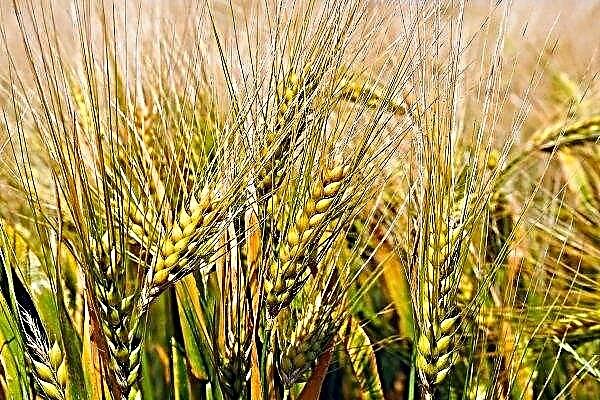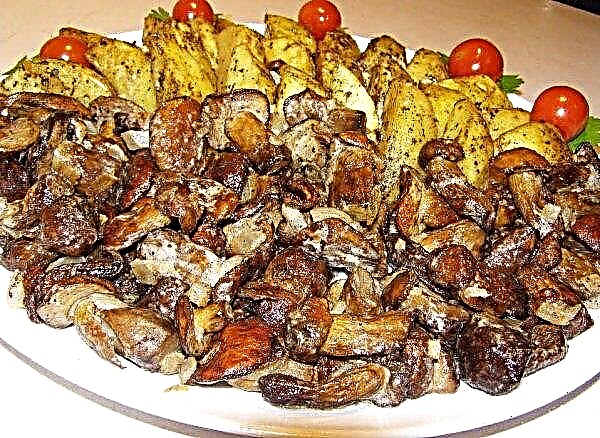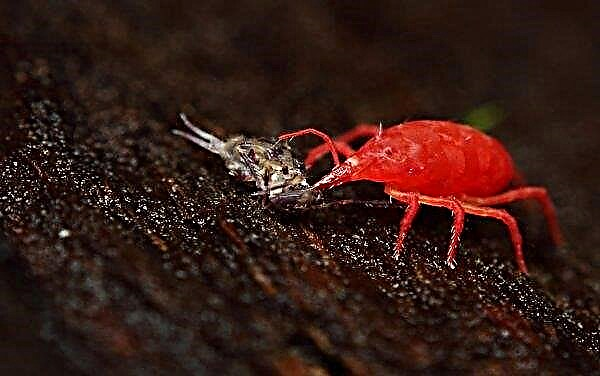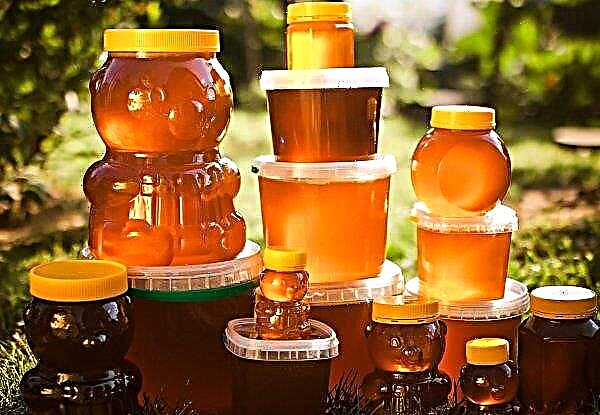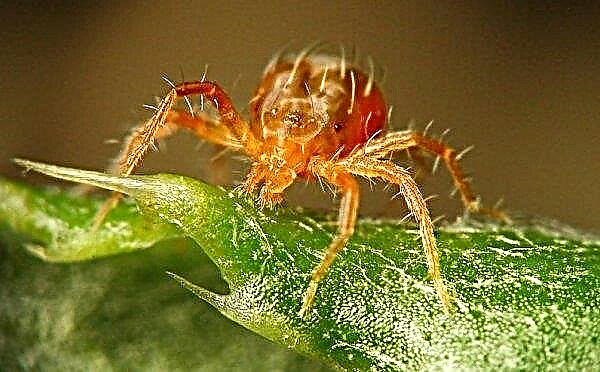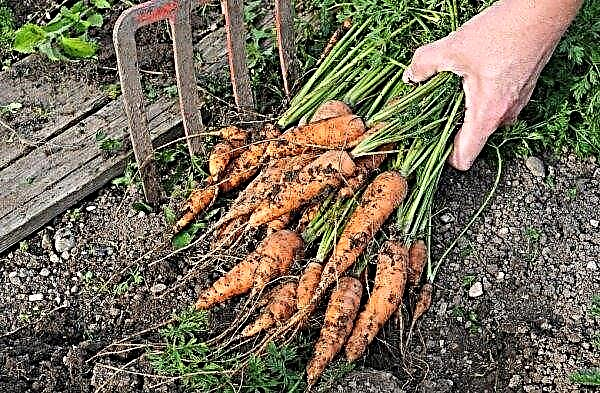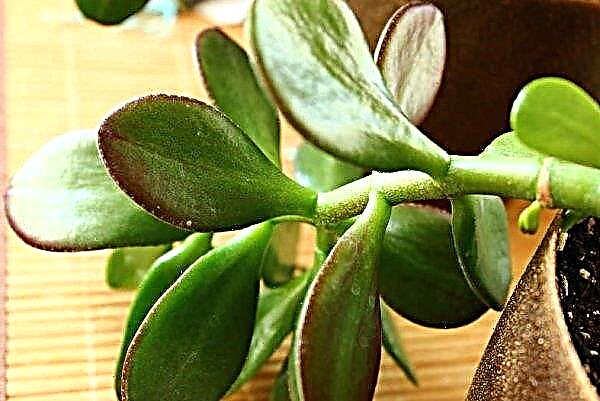Panicle hydrangea (Hydrangea paniculata) is one of the few species of this decorative culture, which embodied the efforts of breeders to create an unpretentious flower. It attracts gardeners and phytodesigners with the ability to withstand frosty temperatures and bloom for a long time. Unfortunately, the pleasure of growing it can overshadow the development of diseases and insect attacks.
Why panicle hydrangea begins to hurt
The decorative culture grows and blooms well if the grower takes into account its preferences in light, moisture, soil structure, neighbors, and also regularly and qualitatively cares for it. If these conditions are ignored, the risks of developing diseases and damage by harmful insects increase.
In addition, the owner of the plant should always be alert and often inspect the flowers in order to assess their condition. If the leaves turn brown or black, treatment should be started immediately.
The main reasons why panicle hydrangea is sick are as follows:
- Wrong place selected. Diseases often develop on those plants that are planted in an open area, most of the time under the influence of sunlight.
- The flower grows in the area where water stagnates. Moisture stagnation is one of the common problems leading to diseases and culture death. Therefore, it is very important to choose dry sites and organize good drainage in the landing hole.
- The landing site is not prepared in accordance with the recommendations. Hydrangea prefers fertile soils. Therefore, the land in the place of its cultivation must first be fertilized. It is also important to clean it from plant debris and dig it to prevent infection by pathogens and pests.
- The flower is planted in heavy soil. The best soil for hydrangea cultivation is light, fertile loam with high acidity.
- The recommended landing dates were not met. The described culture in warm regions should be planted in spring or early fall. In areas with cool winters, only spring planting is allowed.
- Poor or infected planting stock selected. For the purchase of seedlings, you should go to a gardening store or to a well-established nursery. Acquiring "with hands", you can get a weak, diseased plant, besides the wrong variety.
- Lack of nutrients. Hydrangea needs regular fertilizer application.
- Little or too much moisture. The described culture is very hygroscopic, so it is important to establish a competent irrigation regime. At the same time, care must be taken to ensure that the soil is not wet.

Diseases and their treatment
Diseases can provoke fungi, bacteria, viruses. They are transmitted through contaminated soil, water, from plant to plant, using garden tools. Diseases also develop due to adverse environmental conditions.
It is important to detect the problem at the initial stage of development in order to begin treatment as soon as possible. To do this, you should familiarize yourself with a description of the symptoms that will allow you to correctly diagnose and choose therapeutic methods.
Did you know? The Latin name for the genus hydrangea, Hydrangeaceae, supposedly came from three words: hydor - water, angor - longing, hortis - garden (in translation - yearning for water) or the words hydor - water and aggeion - vessel. Having so called the plant, people managed to display the main feature of the plant - moisture lovingness.
Illnesses from Poor Conditions
As a result of exposure to aggressive sunlight, high humidity, prolonged droughts or prolonged rains, problems in growth, hydrangea bloom can occur. For example, direct rays of the sun can cause burns to ground organs.
A lack of moisture provokes yellowing and falling of leaves. Also, the leaves may turn black as burnt. Often due to improper planting and care, the plant refuses to bloom.

Chlorosis
Chlorosis is very common. One of the reasons it develops is a lack of iron. This happens if the plant grows for a long time in the same area.
The main symptoms of chlorosis are:
- leaves become light, yellow, fade;
- buds are deformed.

To resolve the problem, treatment should be done by preparing such means:
- a mixture of copper sulfate (2 g) with citric acid (4 g) diluted in water (1 l);
- dissolved calcium nitrate (40 g) in water (10 l).
The first mixture is treated with leaves, the solution is also used for watering. Effectiveness against chlorosis was shown by the preparations “Antichlorosis”, “Agricole”, “Ferovit”.
Leaf blackening
With the development of dry blackening, they turn brown or blacken, and then the edges of the leaves dry. Drying gradually grows and covers the entire sheet. You can prevent an ailment if you shade a flower and water it with cold, water that has been left standing for several days.
With wet blackening, the leaves soften, lose their shape, darken. Such a phenomenon is provoked by landing in heavy soils, sharp temperature drops, excessive moisture. It is possible to cure a plant if it is transplanted to the recommended soil and to establish the correct watering regime.Important! There are two reasons for this problem: watering with too hard water and prolonged exposure to direct sunlight.

Burns
If the flower grows on a site located at lunchtime under direct aggressive rays of the sun, its ground organs may receive burns. White translucent spots form on the leaves. Places of burns become thinner and dry. When observing such symptoms, the plant should be shadowed.
Lack of flowering
Often the owners are discouraged by the fact that the beautiful hydrangea ceases to bloom. There are several reasons why she has not released buds for a long time:
- Incorrect pruning.
- Impact on buds of cold temperatures.
- The lighting is too bright.
- Lack of moisture or nutrients.

Fungal
Most often, hydrangea is affected by fungi. They spread through the soil, and also develop under the wrong conditions. Fungal diseases lead to disturbances in the growth and development of the plant, and a decrease in immunity. Among the most dangerous ailments are gray and white rot, powdery and downy mildew, septoria, and rust.
Gray rot
The mushrooms that cause this disease affect the leaves. Waterlogging and thickening of plantings contribute to their active development. When infected, the foliage is covered with a gray coating.
The affected parts should be removed and disposed of by burning, after which the sections of the sections should be treated with a solution of potassium permanganate. Flower bushes should be sprayed with Bordeaux liquid or with the preparation “Fundazol”. With a strong infection, the flower is worth getting rid of.
White rot
The fungus begins its harmful effect from the root system. As a result, the plant’s nutrition is disturbed, which leads to a darkening of the ground organs, rotting of the stems in the lower part in contact with the ground, and the appearance of a white coating on the foliage.
The fungus penetrates the ornamental culture from plant debris that has not been harvested from the site, as well as from weeds. Most often, white rot is found on plants growing in greenhouses, greenhouses. It rarely appears in open areas.Important! If the disease is diagnosed at a late stage - when white plaque has already appeared, then it is useless to treat it. The flower should be removed and burned, the soil disinfected, and healthy plants treated with a copper-containing preparation.

In order to cure white rot, it is necessary to remove infected organs and treat the cut sites with a solution of potassium permanganate. Flower plantings should be sprayed with copper-containing preparations, for example, copper sulfate, Bordeaux liquid. In the fight against white rot, a mixture of vitriol (1 tsp), whey (3 l) and water (6 l) worked well.
Powdery mildew
Powdery mildew, as a rule, settles on young, still immature plants. The reasons for its spread are too much nitrogen in the soil and lack of moisture. Affected areas need to be cut and burned. Landings should be treated with Fitosporin-M, Topaz.
Affected areas need to be cut and burned. Landings should be treated with Fitosporin-M, Topaz.
Characteristic symptoms of powdery mildew:
- the formation of yellow-green spots on the upper front plate;
- coating the underside of the sheet with a gray or purple coating;
- falling of foliage.
Did you know? To get different colors of hydrangea, you can add certain substances to the soil before flowering. Watering a solution of aluminum or ammonia alum turns the white petals blue, the pink ones purple, and the introduction of iron blue.
Peronosporosis or downy mildew
The development of this ailment is promoted by high humidity and high temperatures. At the initial stages of infection, oily dark spots form on the foliage. In the future, they appear on the stems. Treatment should begin as soon as the first symptoms appear. Otherwise, the plant will have to say goodbye.

It is necessary to treat peronosporosis with the help of such measures:
- Removal of diseased areas.
- Processing of cut points with a concentrated solution of potassium permanganate.
- Spraying with a solution of Bordeaux fluid (1%), means "Optimo", "Kuproksat.
Septoria
The ailment develops during rainy and cold summers. First, it affects the lower part of the plant, gradually spreading to the upper.

It is possible to understand that hydtoria was overcome by septoria by the following signs:
- Small spots up to 5 mm in size with a bright center and brown fringing appeared on leaves and stems.
- The leaves curl and dry.
- Decorative culture has a depressed look.
Cutting the diseased fragments, processing slices with potassium permanganate, and spraying Rodomil Gold and Pofit Gold will save the plant at the initial stage of the development of the disease.
Rust
Fungal disease, which, like phytophthora, is actively developing on many plants, including hydrangeas. Its development occurs when the flower grows in waterlogged and overfed with nitrogen soil. At the initial stage of the lesion, small yellowish spots appear on the leaves.
Subsequently, rusty or brown growths are formed on them, in which spores mature. As a result, the foliage dries and crumbles.Treatment should begin with the removal of organs affected by rust. After that, flower bushes should be treated with copper chloroxide, “Topaz”, “Falcon”.
Viral diseases
Diseases caused by viruses are especially dangerous because they cannot be treated. They can only be warned. Prevention methods can be found in a separate section below. The most important thing is to plant high-quality, healthy planting material, to prevent mechanical damage to plant organs.
Important! When using chemical preparations for treatment, one should worry about personal safety measures by protecting the body with a special suit, palms with gloves, airways with a mask, eyes with glasses.
Ring spotting
You can find out that the flower was affected by the ring spot virus by the formation of rings in the form of rings. As they develop, the leaves begin to lose shape, curl and crumble. In diseased plants, flowering is absent or weak buds are formed. Having found the characteristic symptoms, the flower bush needs to be removed and burned.

Crayfish
The disease affects plants with weak immunity or damaged specimens. It manifests itself as brown spots on the leaves and stems. Ulcers form under the spots on the back sheet plate. There is only one way to fight cancer - by removing and burning diseased specimens.
Pests and the fight against them
No less dangerous for panicle hydrangea are harmful insects. They settle on the plant, drink juice from it, damage the roots or gnaw leaves, buds. Promoted the spread of pests untidy areas, ignoring loosening.
Aphids, ticks, nematodes, slugs, snails and leaf beetles are the most dangerous for hydrangea. It is important to notice the invasion of pests when there are not so many. In this case, the fight against them can be short-lived and effective.
Video: Hydrangea diseases and pests
Leaf aphid
A microscopic insect that multiplies rapidly and causes severe damage to flower culture, quickly leading to its weakening and death. Aphids feed on plant juices. Sucking out nutrients, the pest provokes yellowing and drying out of the leaves. Aphids can be found on the back leaf plate.
In the mass settlement of pests, insecticides are used, for example, Iskra, Fitoverm, Aktofit, Calypso. In order to prevent the aphids from entering the site or to get rid of it faster, it is necessary to attract its natural enemies - ladybugs, lacewings.
 With a small number of insects, they resort to spraying with a soap solution or irrigation with a strong jet from a hose.
With a small number of insects, they resort to spraying with a soap solution or irrigation with a strong jet from a hose.
Spider mite
This very small sucking insect can cause enormous damage to flower plantings. Hot weather and low humidity contribute to its spread.
In the course of its harmful activity, the tick forms a web, which entangles the ground part. First, small brown or reddish spots appear on the leaves and stems. Subsequently, the foliage curls and dries. Getting rid of the spider mite is quite problematic. The use of acaricides is required, for example, "Aktofita", "Akarina".
Gall nematode
This parasite lives in the earth and infects the root system. Its toxic secretions poison the plant and lead to the formation of red galls, similar to blisters, on the roots and in the lower part of the stem. In the future, they are affected by rot and die. The flower stops growing and dies.
With the defeat of flower plantings, the nematode will have to get rid of diseased plants. It is important to prevent this insect from entering the site, for this it is necessary to cultivate the soil with Fitoverm before planting the seedlings.
Slugs and Snails
Slugs feed on leaves and tops of shoots. Their distribution is facilitated by thickened plantings, shaded places, and high humidity.
These pests are collected by hand. Landings are treated with Molluscocide. Around the flower beds lay crushed eggshells.Important! As a rule, parasites can be found in the leaf sinuses, under the stones.

Leaf beetles
This insect gnaws holes in the leaves, moves in the stems, damages the roots. The fight against this parasite is complex. They are collected manually. They also dig well in the flowerbed. To destroy resort to treatments with systemic insecticides.

Disease and Pest Prevention
Any disease is easier to prevent than to cure. Prevention of ailments is possible if annual and regular preventive measures are taken.
- Every autumn thoroughly clean the area of plant debris.
- Deeply dig the place of growth on the bayonet of a shovel.
- Choose healthy seedlings for planting.
- Set the correct watering regime.
- Strengthen the immune system by applying mineral supplements.
- Take care of the soil in a timely manner.
- Remove weeds in time.
- Inspect flowers regularly.
- Trim exclusively with disinfected garden tools.

Thus, a beautiful plant with lush flowering - panicled hydrangea with improper planting and care can hurt and be affected by pests. In order to prevent health problems, it is important to follow preventive measures. If it was not possible to avoid the disease, proceed to flower treatment as soon as possible. In advanced cases, therapy may be in vain.


